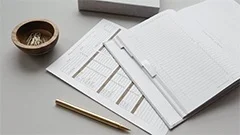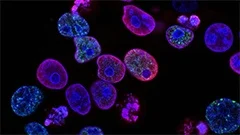Introduction
The human hand is a complex and intricate organ, comprising 27 bones, 34 joints, and over 100 muscles that enable its dexterity and versatility. This course provides an in-depth examination of the musculature of the hand, focusing on the various types of muscles, their functions, innervations, and interactions.
An Overview of Hand Muscles
The muscles of the hand can be divided into three groups: extrinsic muscles, intrinsic muscles, and thenar and hypothenar muscles. These muscles are responsible for the movement, grip, and fine manipulation of objects.
Extrinsic Muscles
Extrinsic muscles originate outside the hand and insert onto the bones within the hand or wrist. They provide primary movements to the fingers and thumb. The extrinsic muscles can be further classified into:
- Flexor Muscles - responsible for flexing the fingers and thumb.
- Extensor Muscles - responsible for extending and straightening the fingers and thumb.
- Abductor Pollicis Longus - responsible for abducting (moving away from the midline of the body) the thumb.
- Adductor Pollicis - responsible for adducting (moving towards the midline of the body) the thumb.
- Palmar and Dorsal Interossei - small muscles that help with fine manipulation, flexion, and extension of the fingers.
Intrinsic Muscles
Intrinsic muscles are situated entirely within the hand and provide finer movements of the digits for precision tasks such as grasping and gripping objects. The intrinsic muscles can be divided into two groups:
- Dorsal Interossei - responsible for helping with fine finger movements, particularly abducting and adducting the fingers.
- Palmar Interossei - responsible for flexing the fingers at the middle phalanges.
- Lumbricals - assist with flexion and extension of the fingers, as well as abduction and adduction.
- Opponens Pollicis - assists in opposing the thumb to other digits for a pinch grip or holding an object firmly.
- Abductor Digiti Minimi - helps with the abduction of the little finger.
Thenar and Hypothenar Muscles
The thenar eminence (located on the thumb side) and hypothenar eminence (located on the little-finger side) are regions containing crucial muscles responsible for providing strength and dexterity in grasping objects. The muscles of these areas include:
- Abductor Pollicis Brevis - assists in abducting the thumb and maintaining its position during gripping.
- Flexor Pollicis Brevis - flexes the thumb at the interphalangeal joint, aiding in grasping objects.
- Extensor Pollicis Brevis - extends the thumb at the interphalangeal joint and helps with maintaining its position during gripping.
- Opponens Pollicis - assists in opposing the thumb to other digits for a pinch grip or holding an object firmly.
- Palmaris Brevis - supports the palm by preventing it from collapsing when applying pressure.
- Adductor Pollicis - draws the thumb towards the other digits.
- Flexor Digiti Minimi Brevis - flexes the little finger at the interphalangeal joint.
- Abductor Digiti Minimi - abducts (moves away from the midline of the body) the little finger.
- Flexor Digiti Quinti Profundus - flexes the little finger at the metacarpophalangeal joint, aiding in gripping objects.
- Opponens Digiti Minimi - assists in opposing the little finger to other digits for a pinch grip or holding an object firmly.
- Flexor Retinaculum - holds the tendons of the flexor muscles in position, allowing them to move freely over the wrist joint.
The Innervation and Blood Supply of Hand Muscles
The muscles of the hand are primarily innervated by three main nerves: the median nerve, the ulnar nerve, and the radial nerve. Each nerve provides motor and sensory functions to specific regions of the hand. Additionally, the blood supply of the hand is derived from both the brachial artery (via the radial, ulnar, and palmar branches) and the deep palmar arch.
Conclusion
Understanding the musculature of the hand provides essential insights into its remarkable function and versatility. The complex interplay of extrinsic, intrinsic, thenar, and hypothenar muscles enables us to perform various tasks with precision, strength, and grace. In this course, we have explored the anatomy, innervation, and blood supply of these muscles, providing a foundation for further study in myology or clinical applications in rehabilitation and surgery.
MCQ: Test your knowledge!
Do you think you know everything about this course? Don't fall into the traps, train with MCQs! eBiologie has hundreds of questions to help you master this subject.
These courses might interest you
Create a free account to receive courses, MCQs, and advice to succeed in your studies!
eBiologie offers several eBooks containing MCQ series (5 booklets available free for each subscriber).



